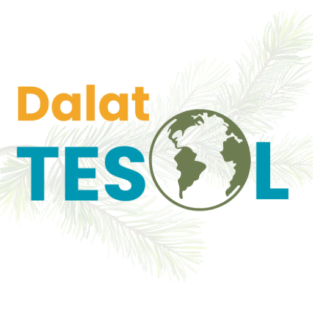By Dalat TESOL
Helping early-career researchers define and justify meaningful research contributions
📌 Introduction
A well-defined research gap is the heart of any strong thesis, proposal, or journal article. Without it, your study risks seeming unnecessary or redundant.
But identifying a gap isn’t about randomly pointing to a topic and saying, “This hasn’t been studied yet.”
It’s about showing that your research addresses a specific need in the literature — something that hasn’t been adequately answered, theorized, or contextualized.
This guide introduces you to the main types of research gaps, explains how to identify them, and offers TESOL-focused examples to help you apply them in your own work.
🎯 What Is a Research Gap?
A research gap is a specific area in a body of literature that:
- Lacks clarity
- Has not been explored
- Has contradictory findings
- Or does not fully address new educational challenges or populations
✅ A strong research gap justifies why your study is needed, and what it contributes.
🔎 1. Theoretical Gap
When existing studies lack a strong conceptual framework, or ignore certain theories that could offer better insights.
✅ Example (TESOL):
Many studies on digital storytelling focus on student motivation but do not engage with sociocultural theory or learner identity frameworks to explain how learners construct meaning.
🎯 Your contribution: Introduce a theoretical model to interpret digital storytelling more deeply.
🔍 2. Empirical Gap
When a topic is under-researched, lacks data, or has not been studied with enough rigor or diversity of methods.
✅ Example:
While many studies explore EFL writing strategies, few have collected longitudinal classroom data to see how those strategies evolve over a semester.
🎯 Your contribution: Use classroom observations and reflective logs over 12 weeks to offer richer, time-sensitive data.
🌐 3. Contextual Gap
When studies have focused on certain countries, age groups, or settings, leaving other relevant contexts unexplored.
✅ Example:
Most research on translanguaging practices focuses on international schools or urban EMI contexts. Very few studies explore translanguaging in rural Vietnamese universities.
🎯 Your contribution: Document how instructors in under-resourced institutions use translanguaging as a coping and pedagogical tool.
⚖️ 4. Contradictory Findings (Inconsistency Gap)
When existing studies report mixed or conflicting results.
✅ Example:
Some studies report that AI feedback improves writing quality, while others find no significant effect — especially among low-proficiency learners.
🎯 Your contribution: Re-examine this issue in a local context with a clear proficiency measure, and include qualitative interviews to understand why results vary.
📉 5. Methodological Gap
When the field relies heavily on a certain method (e.g., surveys), neglecting others that could add value (e.g., interviews, case studies, mixed methods).
✅ Example:
The role of peer feedback in speaking development is often studied using Likert-scale questionnaires. Very few studies record peer interaction and analyze discourse.
🎯 Your contribution: Use conversation analysis to explore the nature and effectiveness of peer feedback in real-time classroom tasks.
🧪 6. Instrument Gap
When the tools used in prior research are outdated, not validated, or not aligned with current technologies or pedagogies.
✅ Example:
Studies on EFL digital literacy often use general ICT questionnaires — but these do not measure AI tool use, prompt awareness, or algorithm literacy.
🎯 Your contribution: Adapt or develop a new measurement tool to capture GenAI-related digital literacies.
📣 7. Practical/Policy Gap
When research hasn’t yet addressed real-world problems, policy implementation, or teacher/learner needs.
✅ Example:
Despite widespread use of EMI in Southeast Asia, there is little research on how national EMI policies are interpreted and adapted by classroom teachers.
🎯 Your contribution: Interview EMI teachers across institutions to explore how top-down policy translates into classroom practice.
🔄 8. Temporal/Recent Change Gap
When new trends, technologies, or social changes have emerged, but have not yet been explored in research.
✅ Example:
Since the launch of ChatGPT, many learners are using generative AI for writing. However, most TESOL studies still focus on older tools like Grammarly.
🎯 Your contribution: Investigate how students use ChatGPT during writing and how it affects their revision behavior and writing confidence.
🧠 How to Identify a Gap (Practical Steps)
| Step | Description |
|---|---|
| 1. Read recent papers (last 5 years) | Focus on the Limitations and Future Research sections |
| 2. Track patterns | Are certain contexts, skills, or learner groups missing? |
| 3. Compare studies | Do findings contradict each other? Use a synthesis table |
| 4. Examine methods used | Are researchers relying on the same approach? |
| 5. Reflect on the real world | Is there a disconnect between research and classroom practice or policy? |
🎯 Pro Tip: Keep a “Gap Notebook” — as you read, note gaps explicitly mentioned, gaps you infer, and your ideas for how to address them.
🧾 Example Research Gap Statement
Here’s a model you can adapt for your thesis or article:
While previous studies have examined students’ perceptions of AI writing tools (Nguyen, 2023; Lee, 2024), few have analyzed how learners interact with such tools during the revision process. Moreover, most studies are based in Western academic contexts, with little known about EFL learners in Southeast Asia. This study addresses both a contextual and methodological gap by conducting a screen-recorded case study of Vietnamese university students using ChatGPT to revise academic essays.
🧠 Final Thoughts
Understanding and articulating a research gap is not about finding something no one has ever studied — it’s about showing what hasn’t been studied enough, or well, or in the right context, or from the right angle.
Strong research starts with curiosity — but impactful research starts with a gap that matters.
Before you write your research questions, define your gap.
Before you collect your data, explain what’s missing.
Before you ask others to read your work, tell them why your study needs to be done.
🌿 Dalat TESOL – Chia sẻ kiến thức giảng dạy, nghiên cứu khoa học và cơ hội xuất bản
